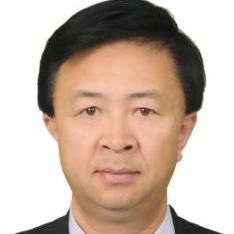Symmetry/Asymmetry in Hot Forming and Numerical Simulation
A special issue of Symmetry (ISSN 2073-8994). This special issue belongs to the section "Computer".
Deadline for manuscript submissions: closed (30 April 2022) | Viewed by 4032

Special Issue Editor
Special Issue Information
Dear Colleagues,
New materials and new processing techniques have been of importance for promoting human society, especially in an era where high-tech industries are becoming a vital measurement of a nation's competitiveness and sustainable development, they also have been the core driving force for vehicle, ship, aerospace and other traditional manufacturing industries.
Hot forming is the latest manufacturing technology, combining the traditional heat treatment technology and the cold stamping technology, which has drawn universal attention from the national industrial policy, industrial circles and academia. It presents broad development prospects and long-term vitality. The numerical simulation method has become an indispensable and important tool for the successful application of hot forming technology in complex industrial products. Nowadays, hot forming is mainly used in the automotive industry, but this technology can be expected to be widely used in other industries, especially in shipbuilding, high-speed train and civil construction. Thus, this Special issue welcomes articles devoted to these industrial fields.
Papers that employ the symmetry or asymmetry concept in their methodologies in the fields of Hot Forming and Numerical Simulation are welcomed. Articles and reviews devoted to the theoretical foundations, associated numerical simulation methods and their applications for the hot forming of metal material are also welcome. Last but not the least, submissions devoted to different aspects of hot forming and numerical simulation are encouraged.
Please note that all submitted papers must be within the general scope of the Symmetry journal.
Prof. Dr. Ping Hu
Guest Editor
Manuscript Submission Information
Manuscripts should be submitted online at www.mdpi.com by registering and logging in to this website. Once you are registered, click here to go to the submission form. Manuscripts can be submitted until the deadline. All submissions that pass pre-check are peer-reviewed. Accepted papers will be published continuously in the journal (as soon as accepted) and will be listed together on the special issue website. Research articles, review articles as well as short communications are invited. For planned papers, a title and short abstract (about 100 words) can be sent to the Editorial Office for announcement on this website.
Submitted manuscripts should not have been published previously, nor be under consideration for publication elsewhere (except conference proceedings papers). All manuscripts are thoroughly refereed through a single-blind peer-review process. A guide for authors and other relevant information for submission of manuscripts is available on the Instructions for Authors page. Symmetry is an international peer-reviewed open access monthly journal published by MDPI.
Please visit the Instructions for Authors page before submitting a manuscript. The Article Processing Charge (APC) for publication in this open access journal is 2400 CHF (Swiss Francs). Submitted papers should be well formatted and use good English. Authors may use MDPI's English editing service prior to publication or during author revisions.
Keywords
- hot forming
- numerical simulation
- automobile industry
- heat treatment and cold stamping technology





